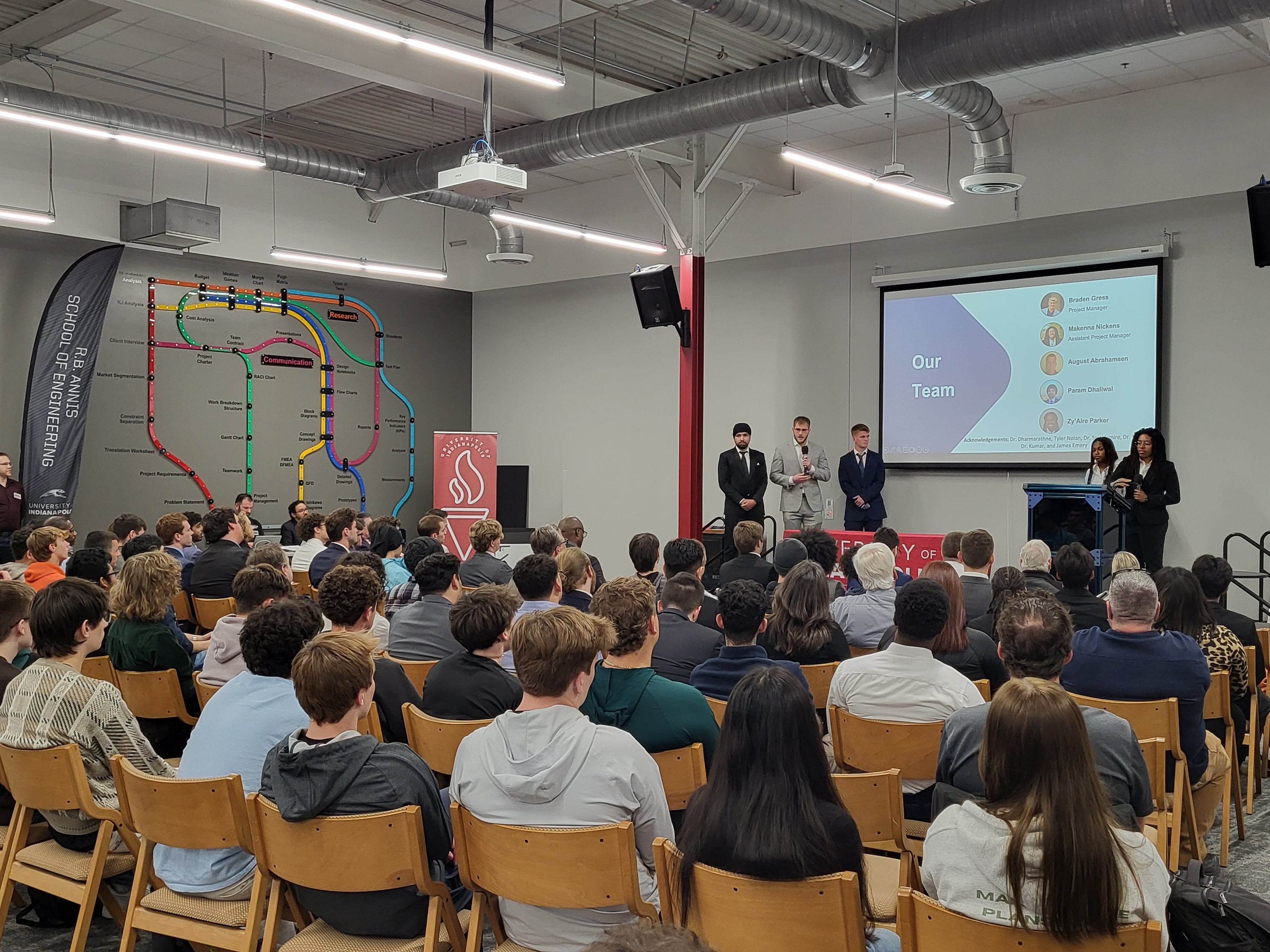DesignSpine Expo Showcases Problem-Solving Skills in the Real World for Engineering Students
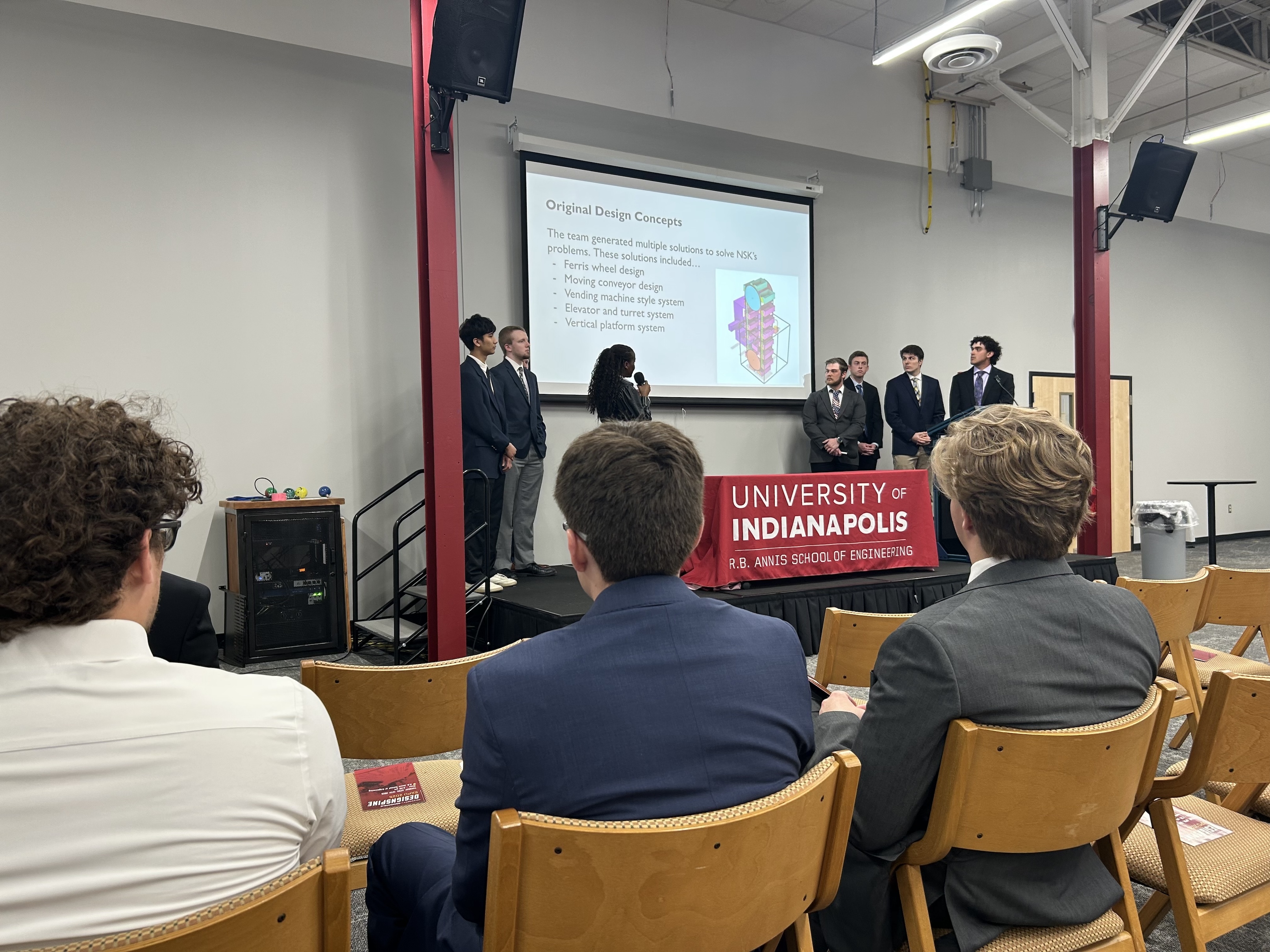
Whether it is creating a better pneumatic snap press for catheters or adding automation to an assembly line machine to create a more efficient and reliable process, University of Indianapolis engineering students demonstrated how they are solving real-world problems for outside clients at the third annual DesignSpine Expo. Every single sophomore through senior in the R.B. Annis School of Engineering presented to an audience as part of the exercise, showcasing how they are learning critical thinking skills, multi-disciplinary communication skills, and client collaboration abilities.
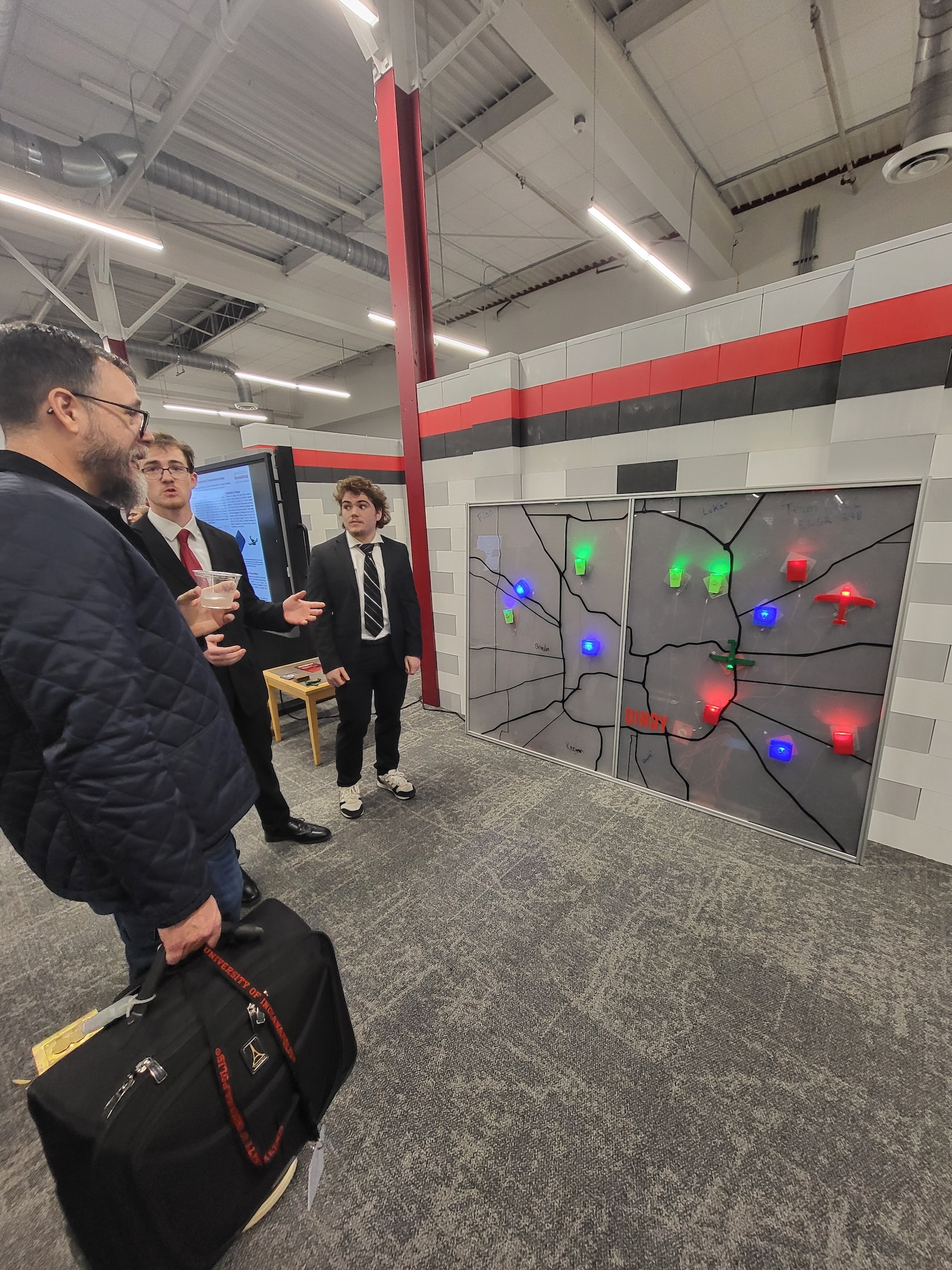
Of the fourteen total DesignSpine projects, 10 were presented by groups of sophomores and seniors who worked with external clients to solve existing problems, including the pneumatic snap press (for Goodwill Commercial Services, which assembles the catheters for Cook Medical) and a cap loading robot (for NSK). Another group of students solved another problem for Goodwill Commercial Services—creating a better process for assembling medical needles at the proper length. Other projects focused on problems on the UIndy campus, including a biometric punch card system for UIndy Facilities and an interactive wall for the Center for Service-Learning and Community Engagement to showcase the service completed by UIndy students in an engaging and interactive way.
The remaining four DesignSpine projects were completed by four groups of junior students who invented innovative designs for new products that could be brought to market, then competed in a business pitch competition. The inventions included a low-cost remote-controlled light switch that can be used without doing any damage to the wall, a smart pet feeder that uses radio frequency technology to dispense food to individual pets to reduce overfeeding or food theft from other pets, and an air keyboard to help prevent sweaty or cold hands while typing.
“DesignSpine presentations give our students a chance to interact in a meaningful way with authentic clients on authentic engineering design projects,” said Associate Dean and Director of Engineering Ken Reid. “Working on open-ended problems like these is far more impactful than regular, closed-ended lab experiments that you can do at any school. It is by far the most important and exciting thing that you’ll do as an undergraduate student.”
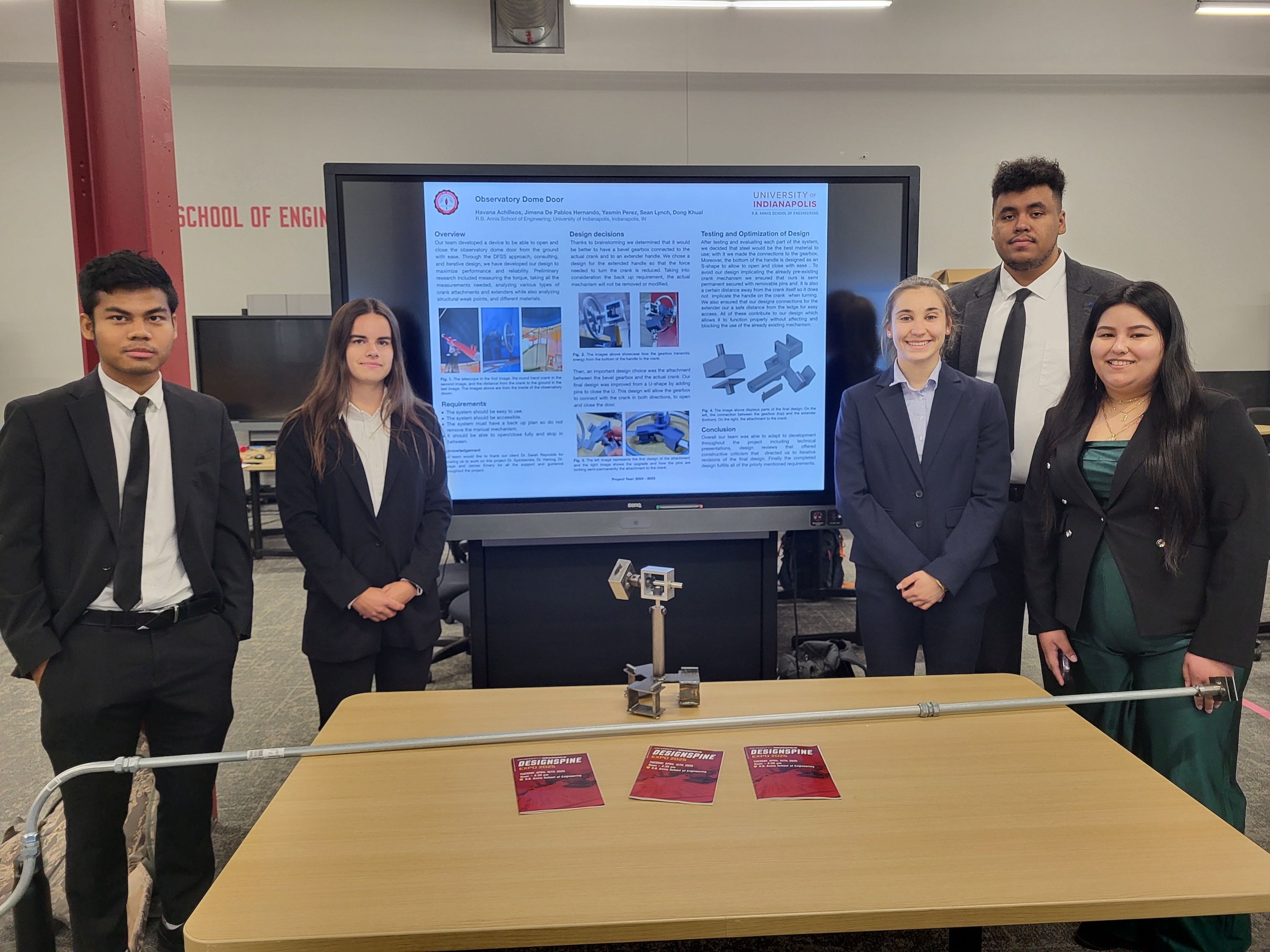
Havana Artemis Achilleos ‘27 (Mechanical Engineering) couldn’t agree more. She was one of six sophomore students (pictured left) working on creating a more effective door mechanism leading to the UIndy observatory dome on the roof for Dr. Sarah Reynolds, client as well as assistant professor of physics & earth-space science.
“It was really good to actually engage in a real-life project that someone is actually going to use at the very end,” Artemis Achilleos said. “We were working on a project that we didn’t know what the final design would look like. It’s not like in a math or physics class where you know what the end result is going to be. They gave us a problem and we have to figure out for ourselves how to get there.”
The DesignSpine curriculum forms the backbone of the real-world learning which takes place at the Annis School of Engineering. Each UIndy engineering student is placed onto a DesignSpine team in the fall, with a faculty advisor overseeing each team for weekly meetings. Past clients have included Fastenal, Citizens Energy Group, the Marion County Soil and Water Conservation District and Carrier.
Perhaps the most important aspect of DesignSpine is that it can serve as a powerful confirmation for students that they have chosen the career path and even the right branch of engineering to focus on. Two other members of the Observatory Dome Door project, Yamin Perez ‘27 and Jimena De Pablos Hernando ‘27, both said the hands-on experience of the project was a great opportunity to confirm that mechanical engineering is the right path for both of them.
“We’re used to sitting in a classroom and just listening to the professor,” said De Pablos Hernando. “But this is actually doing the work and trying to figure out solutions. We had a lot of issues that we were trying to solve, so it was really interesting. It required a lot of work, but it’s useful for the future.”
To learn more about the DesignSpine curriculum and past projects, visit the School of Engineering.
